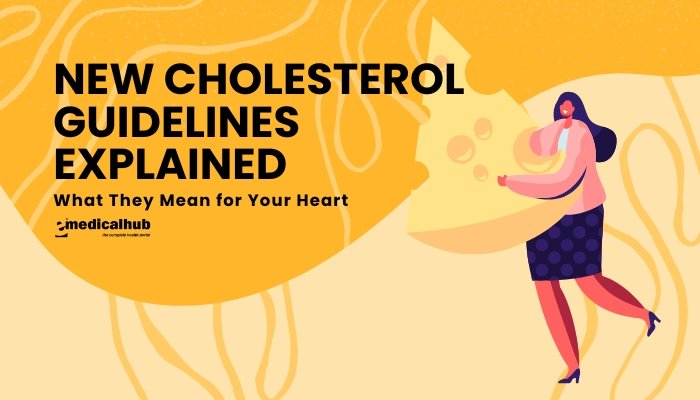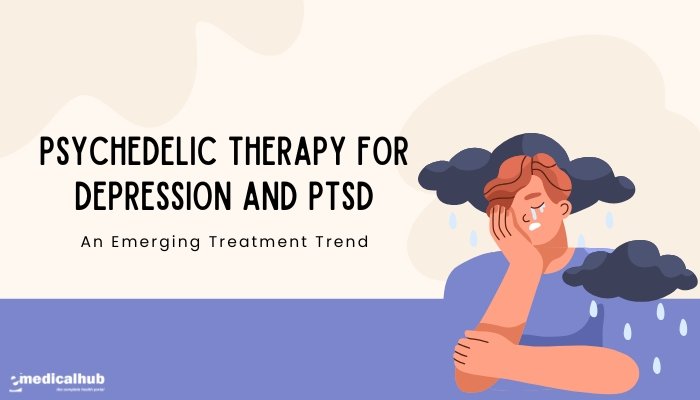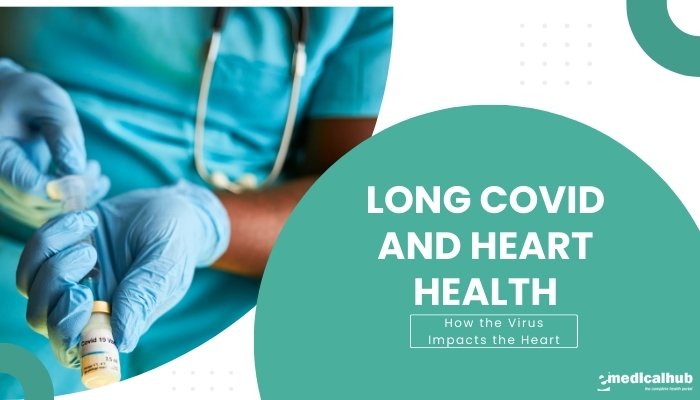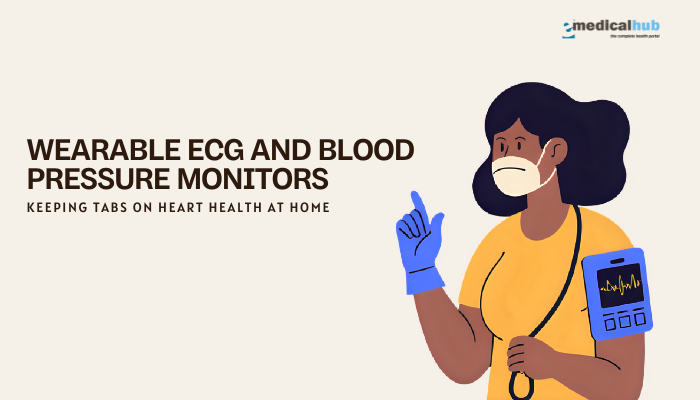Introduction
Cholesterol is a waxy substance that exists naturally in the body. It is essential for building cells and producing hormones. However, too much cholesterol can harm heart health. Excess amounts can lead to fatty deposits in the arteries, increasing the risk of heart attacks and strokes.
Over the years, medical organizations have released guidelines to help people and healthcare providers manage cholesterol levels. These guidelines often evolve as more studies emerge. Understanding the latest cholesterol recommendations can help individuals adopt the right measures for prevention and treatment.
This article explains the updated cholesterol guidelines, focusing on how they apply to different age groups and risk categories. It covers the causes of high cholesterol, key numbers to watch, and steps to keep cholesterol in check. Simple headings and bullet points provide clarity.
Direct language and short sentences improve readability. Readers will find a concluding set of references in Vancouver style for deeper study.
Cholesterol Basics
Types of Cholesterol
Cholesterol travels in the bloodstream packaged in lipoproteins. The type of lipoprotein determines how cholesterol behaves in the body. The main types include:
- Low-Density Lipoprotein (LDL)
Often called “bad” cholesterol. Excess LDL can form plaque in artery walls, increasing heart disease risk. - High-Density Lipoprotein (HDL)
Considered “good” cholesterol. HDL helps transport surplus cholesterol back to the liver for removal from the body. - Very Low-Density Lipoprotein (VLDL)
Carries triglycerides, another type of fat. Like LDL, high levels of VLDL can add to plaque formation. - Triglycerides
Not technically cholesterol, but often measured along with cholesterol levels. High triglycerides can also increase heart disease risk.
Why Cholesterol Matters
- Artery Buildup: Elevated LDL can mix with other substances, creating plaque that narrows arteries.
- Heart Disease: Over time, plaque buildup restricts blood flow, setting the stage for heart attacks.
- Stroke Risk: If plaque or a blood clot forms in the blood vessels leading to the brain, a stroke can occur.
- Systemic Effects: Unhealthy cholesterol can affect other organs, but the main concern remains cardiovascular complications.
Keeping cholesterol in a healthy range is key for long-term heart health. While some risk factors for high cholesterol include age and family history, lifestyle changes can still lower levels significantly.
Evolution of Cholesterol Guidelines
Medical guidelines for cholesterol management come from respected bodies such as the American College of Cardiology (ACC), American Heart Association (AHA), and similar organizations around the world. These guidelines aim to reduce heart disease and stroke cases. Researchers use new data from large-scale studies to fine-tune recommendations over time.
Past Approaches
Older guidelines placed heavy emphasis on specific numeric targets, such as aiming for LDL below a certain threshold. They also advised universal lifestyle modifications and the use of statins for certain high-risk patients. Over time, clinicians noticed that each patient’s overall cardiovascular risk profile mattered more than a single LDL number.
Recent Shifts
- Risk-Based Assessment: Newer guidelines consider overall cardiovascular risk, not just LDL levels.
- Customized Goals: They recommend personalized treatments based on age, existing health conditions, and risk category.
- Focus on Evidence-Based Medication: Statins remain central for many patients, but guidelines also include other drugs for those who need extra help.
Healthcare providers now combine cholesterol values with other information like blood pressure, diabetes status, smoking history, and family background to determine the right treatment strategy.
Key Points from the New Guidelines
- Broader Risk Assessment
Medical professionals look beyond LDL numbers. They examine factors such as age, smoking status, and blood pressure. This approach helps identify who benefits the most from medication. - Lifestyle at the Forefront
Diet, physical activity, and weight management remain cornerstones of preventing and controlling high cholesterol. Guidelines emphasize making these changes before or alongside medication. - Emphasis on High-Intensity Statins
For adults at high risk of heart disease, high-intensity statin therapy is often the first-line option. This approach aims to reduce LDL by 50% or more from baseline. - Additional Therapies
Non-statin drugs (e.g., ezetimibe, PCSK9 inhibitors) may be added if LDL levels do not improve enough on statins alone, or if patients experience side effects that limit statin dosage. - Focus on Specific Populations
Guidelines address groups like people with diabetes, the elderly, and those with a history of cardiovascular events. Each group has unique targets and treatments.
Knowing these fundamental points can help patients and providers work together on personalized strategies for cholesterol control and heart protection.
Cholesterol Numbers and Targets
Cholesterol is measured in milligrams per deciliter (mg/dL) in the United States or millimoles per liter (mmol/L) in many other countries. Although exact targets vary based on personal risk, the following general benchmarks are often cited:
LDL (Bad Cholesterol)
- Optimal: Below 100 mg/dL (below 2.6 mmol/L)
- Near Optimal: 100–129 mg/dL (2.6–3.3 mmol/L)
- High: 160 mg/dL (4.1 mmol/L) or above
HDL (Good Cholesterol)
- Low (men): Below 40 mg/dL (1.0 mmol/L)
- Low (women): Below 50 mg/dL (1.3 mmol/L)
- High (protective): 60 mg/dL (1.6 mmol/L) or above
Total Cholesterol
- Desirable: Below 200 mg/dL (5.2 mmol/L)
- Borderline High: 200–239 mg/dL (5.2–6.2 mmol/L)
- High: 240 mg/dL (6.2 mmol/L) or more
Triglycerides
- Normal: Below 150 mg/dL (1.7 mmol/L)
- High: 200 mg/dL (2.3 mmol/L) or more
However, these cutoffs alone do not decide treatment. Experts consider the entire clinical picture. Someone with multiple risk factors might need aggressive treatment, even if their LDL is borderline. On the other hand, a person with few risk factors and borderline LDL might manage well with lifestyle changes alone.
Risk Categories and Treatment Thresholds
Guidelines group people based on their estimated 10-year risk of developing heart disease or having a stroke. Tools like the ASCVD (atherosclerotic cardiovascular disease) risk calculator combine factors (age, sex, race, blood pressure, cholesterol levels, diabetes, smoking status) to estimate risk.
Major Risk Groups
- Adults with Existing Heart Disease or Stroke
These individuals automatically fall into a high-risk category. Guidelines generally recommend high-intensity statin therapy to substantially lower LDL. - Adults with LDL of 190 mg/dL (4.9 mmol/L) or Higher
This level signals a genetic predisposition or very high risk. Aggressive LDL-lowering therapy is usually advised, often starting with high-intensity statins. - Diabetic Adults (Age 40–75)
Diabetes raises cardiovascular risk. Guidelines often propose moderate-intensity statins, with possible escalation based on other risk factors. - General Population (Age 40–75) with Elevated Risk
Individuals in this group have an LDL of 70–189 mg/dL (1.8–4.9 mmol/L) but do not fit the above categories. If the 10-year ASCVD risk is 7.5% or higher (or 5% or higher by some guidelines), a moderate- to high-intensity statin may be considered.
Age Factors
- Young Adults (< 40 years old)
May receive statin therapy if they have significantly elevated risk or severe LDL levels. Lifestyle modifications remain a priority. - Older Adults (> 75 years old)
Treatment decisions are individualized. Benefits of lowering LDL still exist, but clinicians must consider other factors like life expectancy, medication side effects, and personal preferences.
The Role of Lifestyle in New Guidelines
Lifestyle forms the foundation of cholesterol management. Updated guidelines emphasize the synergy of healthy eating, regular exercise, and weight control, even for patients on medication.
Diet
- Limit Saturated and Trans Fats: Foods like butter, fatty meats, and fried items raise LDL.
- Increase Fruits and Vegetables: These supply antioxidants and help balance overall calorie intake.
- Choose Whole Grains: Whole wheat, oats, barley, and brown rice support healthier cholesterol profiles.
- Opt for Lean Proteins: Fish (especially fatty fish like salmon), poultry, and beans provide beneficial nutrients without excessive saturated fat.
Physical Activity
- Aim for 150 Minutes a Week: Moderate-intensity exercise (brisk walking, cycling) can help reduce LDL.
- Include Strength Training: Resistance exercises two or more days a week can aid in maintaining muscle mass and improving metabolism.
- Stay Active Daily: Simple actions like taking the stairs and walking during breaks promote a healthier lipid profile.
Weight Management
- Balanced Calorie Intake: Track daily consumption to align with energy needs.
- Portion Control: Large portion sizes can lead to excessive calorie intake.
- Sustainable Changes: Gradual improvements in eating habits and exercise routines often work better than extreme diets.
The synergy of diet, exercise, and healthy weight management is vital. Even when medication is prescribed, these changes can amplify the treatment’s success and may reduce the dose needed.
Medication Options
Drug therapy begins when lifestyle modifications alone do not adequately lower LDL or when a person’s cardiovascular risk is very high. Each type of medication works differently.
Statins
- Mechanism: They inhibit a liver enzyme needed for cholesterol production, leading to a drop in LDL.
- Examples: Atorvastatin, Rosuvastatin, Simvastatin.
- Guideline Endorsement: Statins are the first-line therapy for most high-risk groups.
Ezetimibe
- Function: Lowers the absorption of cholesterol in the small intestine.
- Use: Often added when statins alone do not meet LDL goals or if side effects limit statin dosing.
PCSK9 Inhibitors
- Mechanism: These injectable medications increase the liver’s ability to remove LDL from the bloodstream.
- Examples: Alirocumab, Evolocumab.
- When Used: Typically for patients with genetic cholesterol disorders or those who do not achieve sufficient LDL reduction on statins and ezetimibe.
Bile Acid Sequestrants
- How They Work: Bind to bile acids in the intestines, forcing the body to use more cholesterol to replace them.
- Limitations: Can cause gastrointestinal side effects and may interfere with absorption of other drugs.
Niacin and Fibrates
- Niacin (Vitamin B3): Can raise HDL while lowering LDL and triglycerides. However, its use has declined in many guidelines because the long-term benefits on heart outcomes are less conclusive.
- Fibrates: Often used to reduce high triglycerides. Less impact on LDL.
Prescribing decisions weigh effectiveness, side effect profiles, patient preferences, and cost. Most guidelines stress statins as the mainstay, with additional therapies for specific needs.
Special Considerations
Diabetes
People with diabetes have an increased chance of developing heart disease. The latest guidelines often suggest moderate-intensity statins for diabetic adults between 40 and 75, even without additional risk factors. Higher-intensity statins may be necessary if multiple risks exist, such as high blood pressure or a smoking habit.
Kidney Disease
Chronic kidney disease elevates heart risk. Managing cholesterol in these patients is tricky because some drugs might affect kidney function or require dose adjustments. Doctors often choose moderate- or high-intensity statins if the patient’s kidney function allows.
Familial Hypercholesterolemia
This genetic condition leads to very high LDL levels, sometimes above 190 mg/dL. Statins, ezetimibe, and PCSK9 inhibitors often combine to lower LDL in these patients. Early detection is critical, as plaque can start building up in childhood.
Pregnancy
Cholesterol levels naturally rise during pregnancy to support fetal development. Statins and some other cholesterol-lowering drugs are usually avoided, as they could affect the fetus. Diet and exercise are the primary tools for managing cholesterol during this period. Women of childbearing age who are on statins must discuss pregnancy plans with their healthcare provider.
Monitoring and Follow-Up
After starting a cholesterol-lowering plan—either lifestyle changes, medications, or both—regular monitoring ensures progress. Check-ups may include:
- Blood Tests: A fasting lipid panel or a direct LDL test helps track changes in LDL, HDL, and triglycerides.
- Liver Function Tests: Certain medications, such as statins, can affect the liver. Doctors may order these tests periodically.
- Muscle Symptoms Review: Statins can sometimes cause muscle aches or weakness. Patients should report such symptoms right away.
- Blood Pressure Monitoring: High blood pressure often coexists with high cholesterol. Controlling both is vital.
- Lifestyle Assessment: Providers might discuss diet, exercise routines, and other habits to see if adjustments are needed.
Frequency of follow-up varies, but many guidelines suggest a recheck of lipid profiles within 4 to 12 weeks after starting or adjusting therapy, then every 3 to 12 months as clinically indicated.
Common Myths About Cholesterol
- Myth: Only Overweight Individuals Have High Cholesterol
Reality: Thin people can also have elevated LDL levels. Genetics and diet play key roles. - Myth: High HDL Cancels Out High LDL
Reality: Both matter. Although high HDL can be protective, excessively high LDL still raises cardiovascular risk. - Myth: All Fats Are Bad
Reality: Unsaturated fats (in nuts, seeds, avocados, fish) are beneficial. Saturated and trans fats can raise LDL. - Myth: Cholesterol Issues Begin Only in Middle Age
Reality: Plaque buildup can start in childhood. Early screening is recommended if there is a family history of very high cholesterol. - Myth: Statins Are Always Dangerous
Reality: Statins are among the most studied drugs, with a strong record of safety and effectiveness. Major side effects are rare.
Table: Overview of Cholesterol-Lowering Medications
| Medication Class | Primary Effect | Examples | Notes |
| Statins | Lower LDL | Atorvastatin, Rosuvastatin | First-line therapy for most high-risk groups |
| Ezetimibe | Reduce cholesterol absorption | Ezetimibe | Often added to statins if further LDL reduction is needed |
| PCSK9 Inhibitors | Enhance LDL clearance | Alirocumab, Evolocumab | Injectables, used for genetic disorders or statin intolerance |
| Bile Acid Sequestrants | Bind bile acids in intestines | Cholestyramine, Colesevelam | May cause digestive side effects, can affect medication absorption |
| Fibrates | Lower triglycerides | Fenofibrate, Gemfibrozil | Mainly for high triglycerides; moderate effect on LDL |
| Niacin | Raise HDL, lower LDL | Extended-release niacin | Benefits on heart outcomes remain less certain in recent studies |
Frequently Asked Questions
- Should everyone take a statin if their LDL is high?
Not necessarily. Treatment decisions depend on overall risk. Many people benefit from intensive lifestyle changes first. However, those with high risk or very high LDL levels often need statins. - How quickly can lifestyle changes improve cholesterol?
Some individuals see noticeable improvements in LDL and HDL within a few weeks to months. Consistency in diet and exercise plays a major role. - What if I have muscle aches while on statins?
Contact your doctor. They may check certain blood tests or adjust the dosage. Sometimes a different statin or additional supplement (such as coenzyme Q10) may help. - Are plant-based diets helpful for lowering cholesterol?
Yes. Many plant-based diets emphasize whole grains, fruits, vegetables, legumes, and nuts, which can support healthier lipid levels. - Is there a “healthy” level of cholesterol to aim for as I age?
Cholesterol goals vary by individual risk factors. Generally, guidelines recommend an LDL well below 100 mg/dL for most and even lower for those with heart disease or multiple risks. - How often should I get my cholesterol checked?
Healthy adults may check every 4–6 years. People with higher risk or on treatment might need checks at least once a year or more often as recommended.
Impact of Early Screening
Cholesterol issues often surface without visible symptoms. This underscores the importance of screening:
- Children and Adolescents: In some places, guidelines suggest a cholesterol check between ages 9–11 and again at 17–21, especially with family history.
- Young Adults: Early adult screening can catch elevated LDL before it causes arterial damage.
- Genetic Cases: Familial hypercholesterolemia can present in childhood. Early detection allows for prompt therapy to prevent premature heart events.
Early screening, combined with prompt intervention, can slow plaque formation and reduce the likelihood of heart attacks in later years.
Practical Tips for Day-to-Day Cholesterol Management
- Read Nutrition Labels: Check for hidden trans fats, sugars, and high sodium.
- Cook at Home: Use olive or canola oil instead of butter or lard.
- Prioritize Fiber: Whole grains, fruits, vegetables, and legumes can help reduce LDL.
- Stay Hydrated: Drinking water supports overall metabolism.
- Avoid Tobacco: Smoking worsens cholesterol balance by lowering HDL and damaging blood vessels.
- Manage Stress: Chronic stress can influence eating habits and hormone balance, impacting lipid levels.
- Adhere to Medications: If prescribed, follow dosage instructions and keep follow-up appointments.
Combining Diet, Exercise, and Medication
Many people benefit from a multifaceted strategy:
- Dietary Upgrades: A heart-friendly diet may reduce LDL by 10–15%.
- Physical Activity: Exercise can further lower LDL and raise HDL.
- Medication: Statins or other drugs provide an additional 20–50% drop in LDL, depending on intensity.
- Ongoing Support: Professionals like nutritionists, pharmacists, and exercise specialists can guide sustainable changes.
Consistency is vital. Crash diets or sporadic exercise bring modest results. Long-term success rests on a steady routine adapted to individual preferences and medical needs.
When to See a Specialist
Most primary care doctors can manage cholesterol effectively. However, a referral to a cardiologist or lipid specialist might be necessary if:
- LDL is extremely high (e.g., over 190 mg/dL).
- There is a suspicion of familial hypercholesterolemia or other genetic disorders.
- Patients do not respond to standard therapy or have trouble tolerating medications.
- Additional complexities like advanced heart disease or kidney problems exist.
Specialists can order advanced tests, such as coronary calcium scoring or genetic screenings, to refine treatment decisions.
Conclusion
The newest cholesterol guidelines emphasize a risk-based, comprehensive approach. While numeric targets remain important, healthcare professionals now focus on the overall cardiovascular profile. Individuals with a high risk of heart disease receive more aggressive interventions, starting with lifestyle changes and frequently including potent statins. Others with moderate or low risk may rely on diet and exercise to manage borderline LDL levels.
Frequent check-ups help measure progress and adapt treatments. Early screening is essential, especially for those with family histories of high cholesterol. Small but steady changes—reducing saturated fat, adding fiber-rich foods, staying active—can pay large dividends over time. Medications offer another avenue of defense for those who need additional help lowering LDL. By combining the best of both worlds—healthy habits and science-based medicine—people of all ages can protect their hearts from the dangers of high cholesterol.
References
- Grundy SM, Stone NJ. Guidelines for the management of elevated low-density lipoprotein cholesterol. Circulation. 2019;139(5):e1082-e1143.
- Wilson PW, Jacobson TA. The evolving landscape of cholesterol guidelines. J Clin Lipidol. 2020;14(2):121-8.
- Arnett DK, Blumenthal RS. A contemporary view of lipid-lowering therapy in primary prevention. Eur Heart J. 2020;41(3):243-50.
- Mach F, Baigent C. New insights into cardiovascular risk assessment and management. Lancet. 2021;398(10297):2393-402.
- Lloyd-Jones DM, Morris PB. Tailoring statin therapy: A focus on patient-centered risk. JAMA Cardiol. 2020;5(2):174-81.Cao Y, Ridker PM. Contemporary lipid-lowering strategies and
- their impact on coronary event reduction. Atherosclerosis. 2021;327(4):1-8.
- Piepoli MF, Hoes AW. Key highlights of revised cholesterol guidelines. Eur J Prev Cardiol. 2021;28(3):305-12.
- Mora S, Wenger NK. Cardiovascular disease in women: an update on cholesterol management. J Womens Health. 2020;29(3):321-9.
- Toth PP, Banach M. Ezetimibe therapy in managing elevated LDL. Curr Atheroscler Rep. 2019;21(10):39-46.
- Sabatine MS, Giugliano RP. PCSK9 inhibition in reducing LDL and cardiac events. Lancet. 2020;395(10238):283-91.
- Laufs U, Descamps O. Lifestyle therapy for dyslipidemia: building the foundation. Prog Cardiovasc Dis. 2021;66(3):32-41.
- Rosenson RS, Hegele RA. Genetic causes of severe hypercholesterolemia: bridging to new therapies. J Lipid Res. 2021;62(4):100017.







